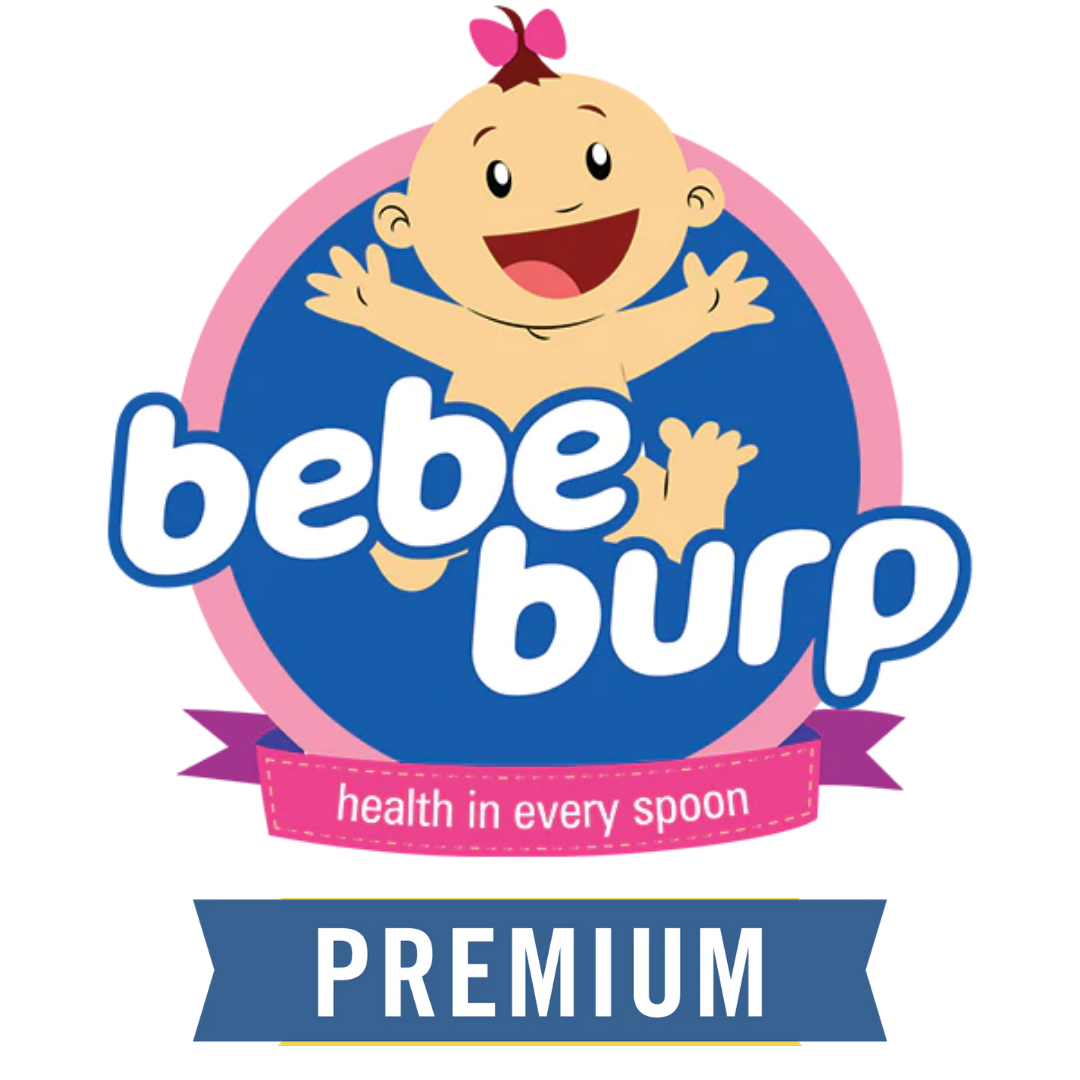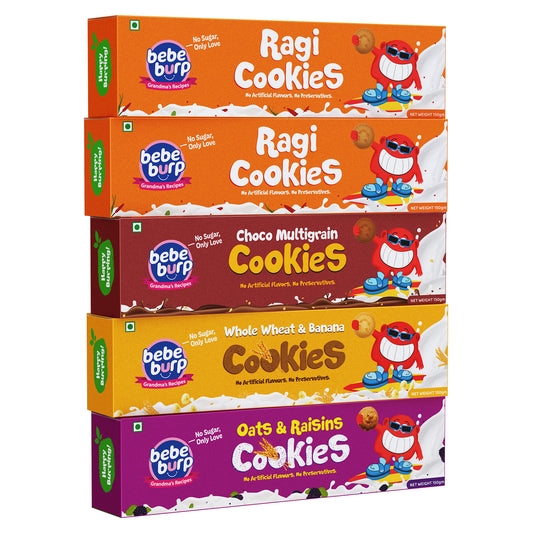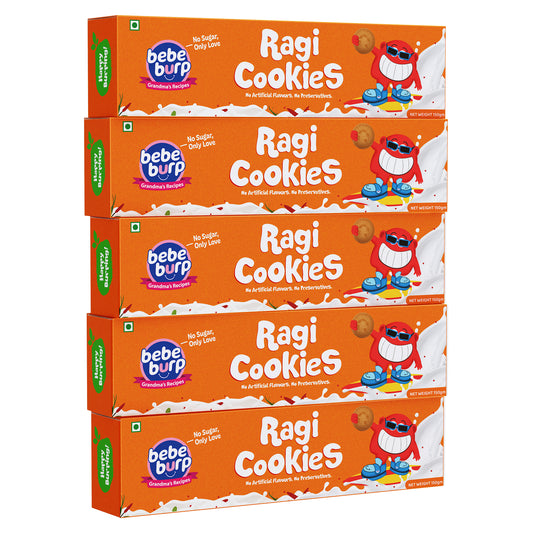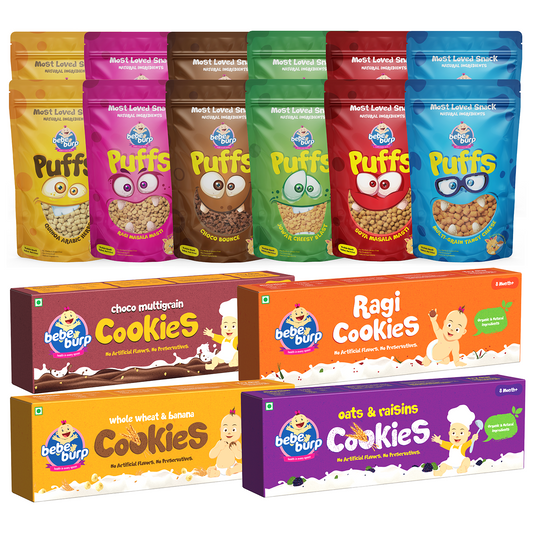To help prevent food allergies in babies, start giving your baby small amounts of different foods, including milk, eggs, and peanuts, between four and six months of age.
Introduce new foods only one at a time, then observe for any signs like bloating, vomiting, or rashes.
See a doctor first if someone in your family suffers from allergies or if your child develops eczema.
Should your infant have a food allergy, avoid giving it again. Always review food labels and keep any prescribed medication, like allergy syrup or emergency injection, close at hand.
Also, routinely visit the doctor with your infant to monitor their health and dietary progress.
Understanding Food Allergies in Babies
Think of your baby’s immune system as a superhero with a sidekick: their digestive tract. Sometimes, the superhero gets confused and attacks harmless foods (like milk or nuts). These attacks cause allergies.
What Are Food Allergies in Babies?
Typical allergy-trigger foods are soy, wheat, cow's milk, eggs, peanuts, tree nuts (almonds, cashews), and fish.
Reactions could be moderate (itchy skin), or severe (swelling or problems breathing).
Early Prevention Strategies
According to science, early (around six months) introduction of allergenic foods can lower allergic risk.
Offering peanut butter or scrambled eggs, for instance, progressively helps "Condition" your infant's immune system. Always first check with your doctor!

Ragi, Choco, Wheat, Oats & Raisin Cookies Combo 1 – Pack of 4 (150g each)
A wholesome blend of ragi, whole wheat, oats, and raisins, sweetened with jaggery and brown sugar. Made with cow ghee and milk powder, offering a nutritious snack for toddlers above 8 months.
Rs. 776
Buy NowHigh-Risk Allergen Introduction Techniques
- Start small: Present the allergen, perhaps as a drop of boiled egg or a pea-sized smear of peanut butter.
- Wait and see: Spend ten to fifteen minutes watching your infant; then, keep an eye on her for a few hours.
- Keep to one: Add just one new allergy at a time.
- Blend it in: Combine new foods with familiar ones (like mashed banana or peanut powder in breast milk).
- Stay cool: mild responses like a little rash can occur; note the symptoms and see your pediatrician.
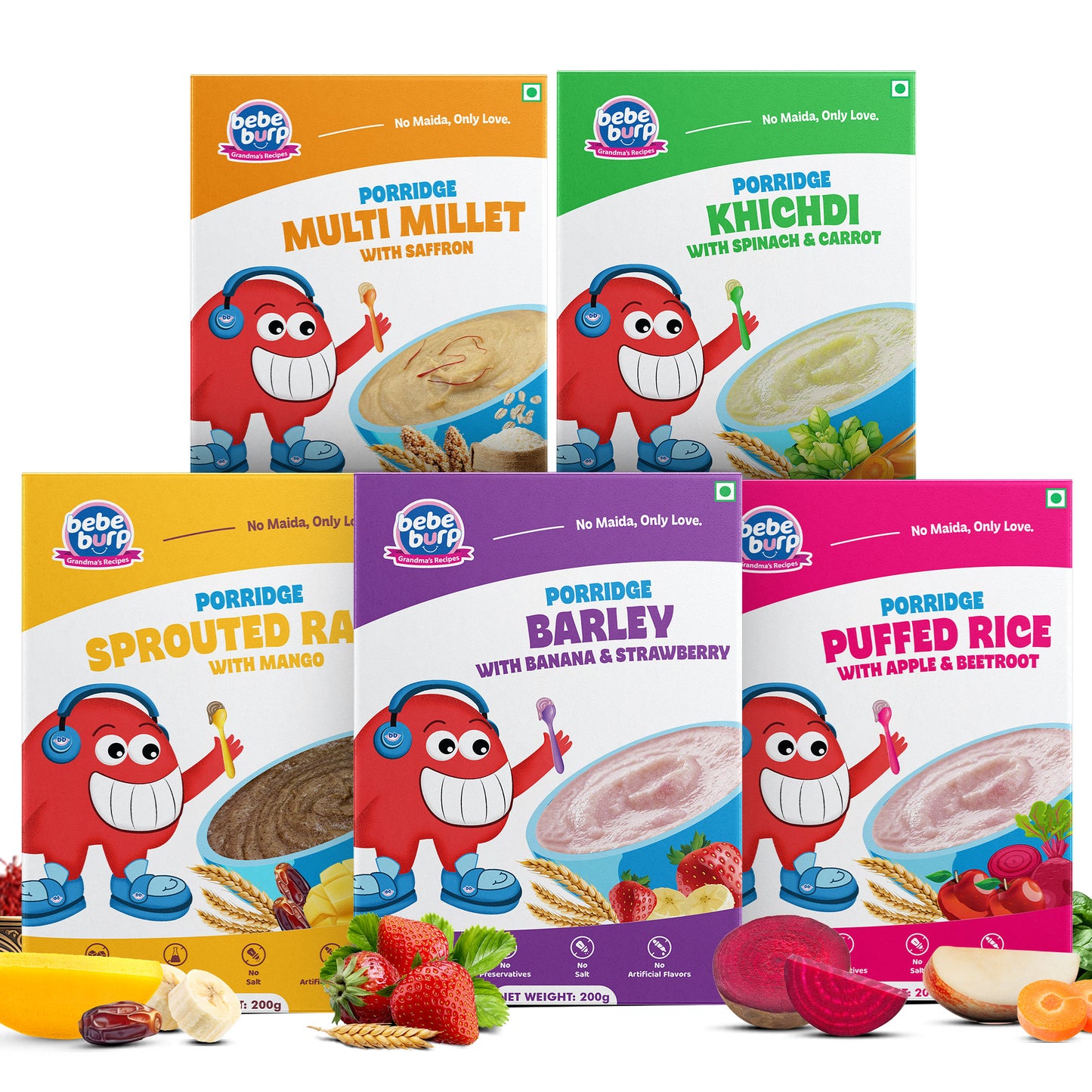
Porridge Combo Pack – Pack of 5 (200g each)
A healthy mix of 5 porridge variants made with millet, fruit powders, and jaggery. Perfectly crafted for growing toddlers with natural ingredients and no preservatives.
Rs. 1,299
Buy NowAsk before you start attempting. See a doctor before introducing common allergies like dairy, eggs, or peanuts to high-risk newborns.
Baby Food Allergy Symptoms: What Every Parent Should Know
Look for these typical indicators of a food allergy in young children:
- Often around the mouth or cheeks, skin reactions include redness, hives, or itchy rashes.
- digestive problems: after meals, vomiting, diarrhea, or too much gas.
- Lips, eyes, or the face could enlarge either rapidly or slowly.
- Emergency: Wheezing, coughing, nasal congestion, dyspnea.
- After trying a new meal, irritability—that is, unexpected frenzy, tears, or discomfort.
- Anaphylaxis: Should trouble breathing, blood pressure drop, or consciousness loss arise, an unusual but serious reaction should be reported immediately to emergency staff.
Should any of these symptoms arise, stop the new food right away and visit your pediatrician.
Dietary Strategies for Allergy Prevention
Introduce allergies early: Between 4 and 6 months, offer foods including dairy, eggs, and peanuts to lower allergic risk.
For the first six months, breastfeed: This may help prevent allergies.
Steer clear of processed foods: instead, keep to fresh, unprocessed meals such as grains, fruits, and vegetables.
Bring a range of dishes: Offer several foods gradually to develop tolerance.
See your doctor, pediatrician: Before adding high-risk foods, discuss eczema or a family history of allergies with your doctor.
Creating an Allergy-Safe Environment
Go over all food labels: Search packaged goods for hidden allergies.
Clean thoroughly: After handling allergic meals, wash surfaces, hands, and utensils.
Steer clear of cross-contact: by serving allergy-safe food from different utensils and dishes.
Store securely: Store foods, both allergic and non-allergenic, separately.
Inform Family, daycare providers, and caretakers of your baby's allergies.
Keep emergency drugs close by: always have prescribed allergy medication or epinephrine auto-injectors on hand whenever needed.
Long-Term Management and Support
Replace cow's milk with oat milk or use sunflower butter rather than peanut butter. Smart substitutions abound.
Join a group for support: Engage parents for advice and comfort.
Regular visits: As your child develops, allergies may change; hence, keep in touch with your doctor.
Conclusion
Though food allergies can feel overwhelming, you have this with early action, careful preparation, and cooperation with your pediatrician!
Mealtime will become allergy-free pleasure if you keep vigilant and provide a safe environment.
